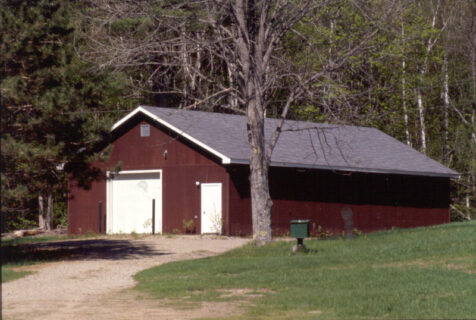Overview
The Hubbard Brook Physical Archive was completed in 1990 to permanently store research samples for future use in Hubbard Brook studies. The building provides a special and unique opportunity to maintain a research memory for long term ecosystem studies. To date there are 60,000 barcoded and cataloged samples ranging from water samples to soils and plant parts. Samples from ongoing, long-term collections and shorter-term projects are included. Cataloged samples are accessible on-line in a public searchable database and are available for subsampling for new studies and additional analyses. Stored and catalogued samples have been used to address scientific questions and have resulted in additional publications featuring archived sample analysis.
The archive is managed to accommodate future sample submissions. Samples from Hubbard Brook are accepted into the archive system if they are likely to be of future use, and are accompanied by adequate documentation, including location of sampling sites. Detailed metadata is submitted with each sample and stored in a relational database. The Hubbard Brook website provides browse/search/filter access to the sample database at both the collection and sample level. New data enter the database through templates filled out by sample submitter.
If you wish to archive samples that you have collected, please refer to the directions for submitting samples.
If you wish to use the samples in the collection, please view the subsampling policy and fill out the subsampling request form.
In 2006, the sample archive building was dedicated to Cynthia A. Veen, who served as the HBES information manager from 1988 to 1996.


Please send forms and inquiries to:
Amey Bailey
Hubbard Brook Experimental Forest
234 Mirror Lake Road
North Woodstock, NH 03262
Email: ameybailey@usda.gov
Tel.: (603) 726-8902
Sample Archive Subsampling Policy
We are happy to share these archived samples with responsible scientists. We take subsampling and the dissemination of the associated data very seriously. As stewards of these samples, our highest priorities are:
- to maintain the chemical integrity of these samples;
- to document the use of these samples, and any resulting changes;
- inform principal investigators of interest in using them;
- to acknowledge the appropriate funding sources for their original collection.
We ask that you adhere to the following guidelines as matter of common courtesy and ethical responsibility:
- Please fill out this form as completely and carefully as possible.
- Please allow time for the Information Management Subcommittee (IMSC) to route this request to the PI for approval.
- Please allow the original PI the option to review or participate in any publication that makes extensive use of the data provided from any reanalyses.
- Please cite the funding sources that supported the original collection and storage of these samples, in any publication resulting from this research.
- Initiate a request for subsampling by completing his form, and returning it to Amey Bailey (contact info above).
Directions for Sample Submission
Requirements for acceptance of samples:
- Adequate documentation must accompany physical samples.
- Samples are stored in either an unheated large room or a smaller room that is heated to just above freezing. The contributing scientist is responsible for deciding that these conditions are suitable for his/her samples.
- Soil samples must be air or oven-dried and stored in plastic or glass bottles with screw caps to ensure a tight seal. No cardboard containers please.
- Vegetation samples should be dried, ground and stored in clear plastic or glass containers.
- Water samples must be stored in plastic bottles and will be accepted either poisoned or not poisoned. If poisoned, the investigator must specify the type and concentration used.
- All logs, cookies and cores should be air-dried and can be stored in cardboard boxes or arranged in a manner that will allow for air to flow between individual samples. Tree cores should be mounted or stored in straws.
- Samples that are considered toxic may be rejected. The data management committee may confer with the SAC about important, but toxic samples requiring storage.
